Growing costs and budget constraints highlight challenges facing Clark County in 2019
CLARK COUNTY — If 2019 brings any hope to the leadership of Clark County, it’s that perhaps there’s a chance for some continuity for the first time in quite a while.
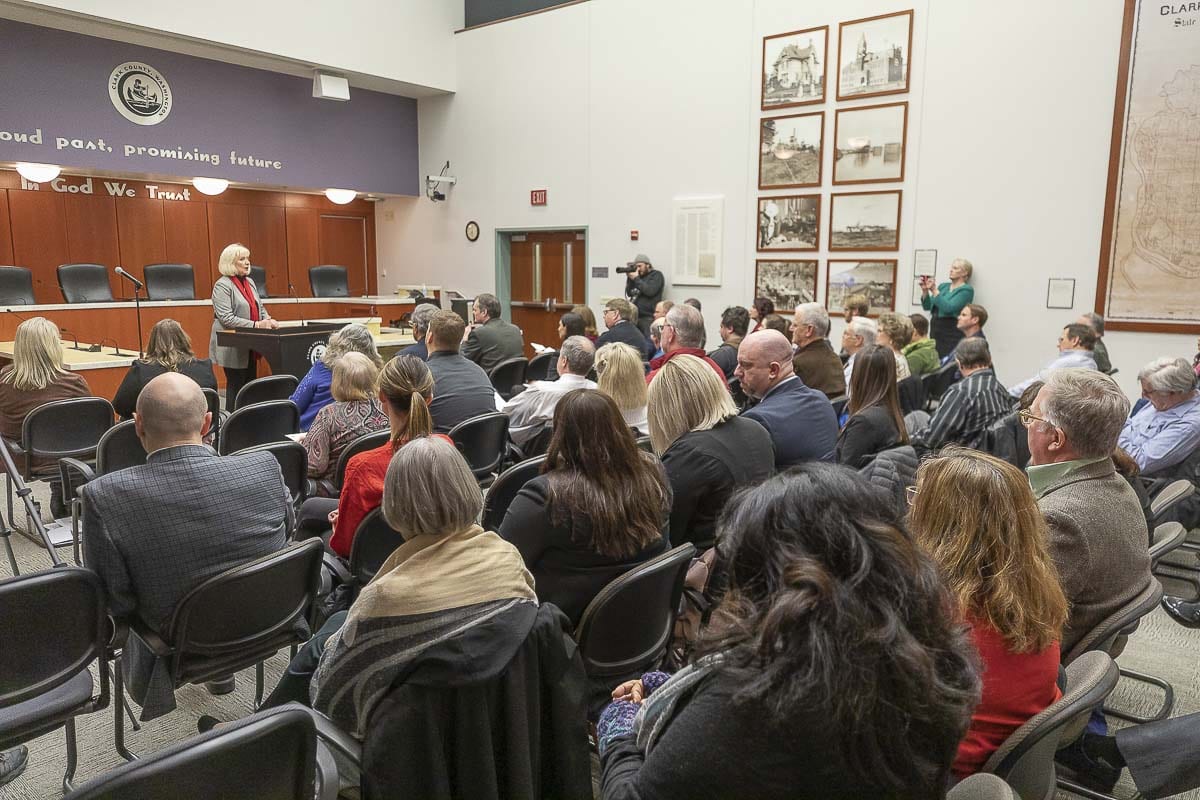
This will be the first full year for new County Manager Shawn Henessee who describes the process of figuring things out as “drinking from a fire hose and trying to not have your face ripped off in the process.”
The county also has a new chair in Eileen Quiring, who made only brief comments during the State of the County address at the county building on Wednesday, choosing to highlight improvements made by new Community Development Director Mitch Nickolds to the county’s long-maligned process for new building permits and inspections.
Among those improvements are reduced review times for building plans that have been put together by licensed engineers. The department has set a goal of 15 working days for approval of new homes in rural lands, and commercial developments of over 4,000 square feet. The county also now has online access for 40 of the 45 permitting and inspection services, and Quiring says surveys have shown a 93 percent approval for their new workflow and county arrangement, which has reduced customer wait times from 33 minutes to an average of 10 minutes.
The council starts the new year with two new members. Temple Lentz took over the District 1 seat from Jeanne Stewart in the November election, while Gary Medvigy was named to fill Quiring’s vacated District 4 seat. He will need to win the seat outright in an election later this year.
Measles outbreak
One of the prominent topics for nearly every council members is the ongoing measles outbreak impacting Clark County. As of Friday, 70 cases had been confirmed, mostly in children under the age of 10.
“And if you have been living under a rock, then at least you’re probably safe from the fact that Clark County started the new year with an outbreak of measles,” quipped Lentz.
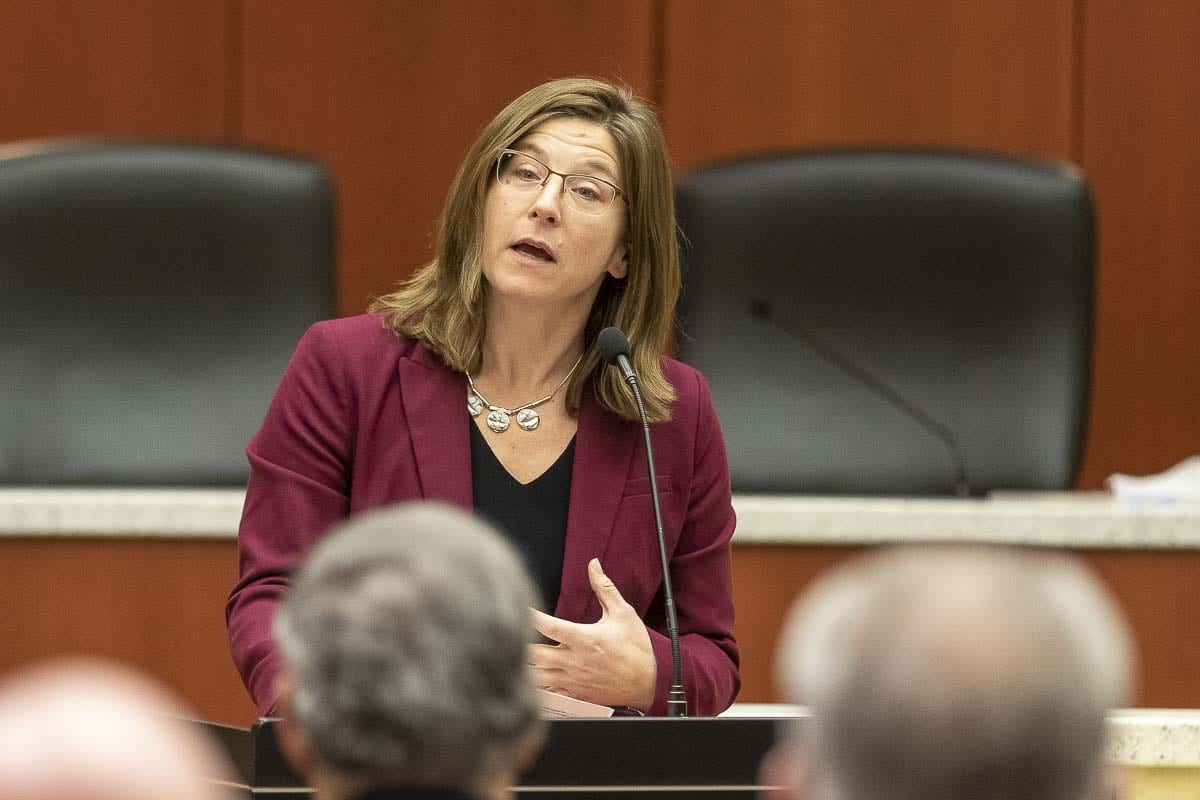
So far the outbreak has cost Clark County Public Health over $600,000, and the state health department nearly three-quarters of a million dollars.
“Without the work of the Health Department, we would’ve had a lot more cost, a lot more illness, perhaps more serious illness,” said Medvigy, who has been a vocal proponent of stronger rules around vaccine exemptions. He said he hopes parents will now listen to their “better angels” and “get the inoculations not only for the health of their child and for themselves, but to protect the people they don’t know.”
The county council has passed a resolution in support of state legislation that would eliminate personal objections for measles vaccines in schools statewide.
County jail and public defenders program
Among the largest challenges facing the council this year is what to do with the outdated county jail, and fixing funding for public defenders.
On indigent defense, Lentz pointed out that fees paid for lawyers who defend people who can’t afford an attorney have received the same flat fee since 2009.
“Though Clark County is the fifth-largest county in the state, we have the 7th lowest spending on public defense per capita,” Lentz said. “As a result, it is becoming more and more difficult to find contractors who will accept the low rates that we offer.”
Lentz added that the problem leaves the county teetering dangerously on the edge of denying people the right to a fair and speedy trial.
“We are required by the state to provide these services, but we don’t receive adequate state funding to meet the need,” said Lentz.
District 2 Councilor Julie Olson added that indigent defense now costs the county over $5 million each year, while state funding remains around $300,000 annually.
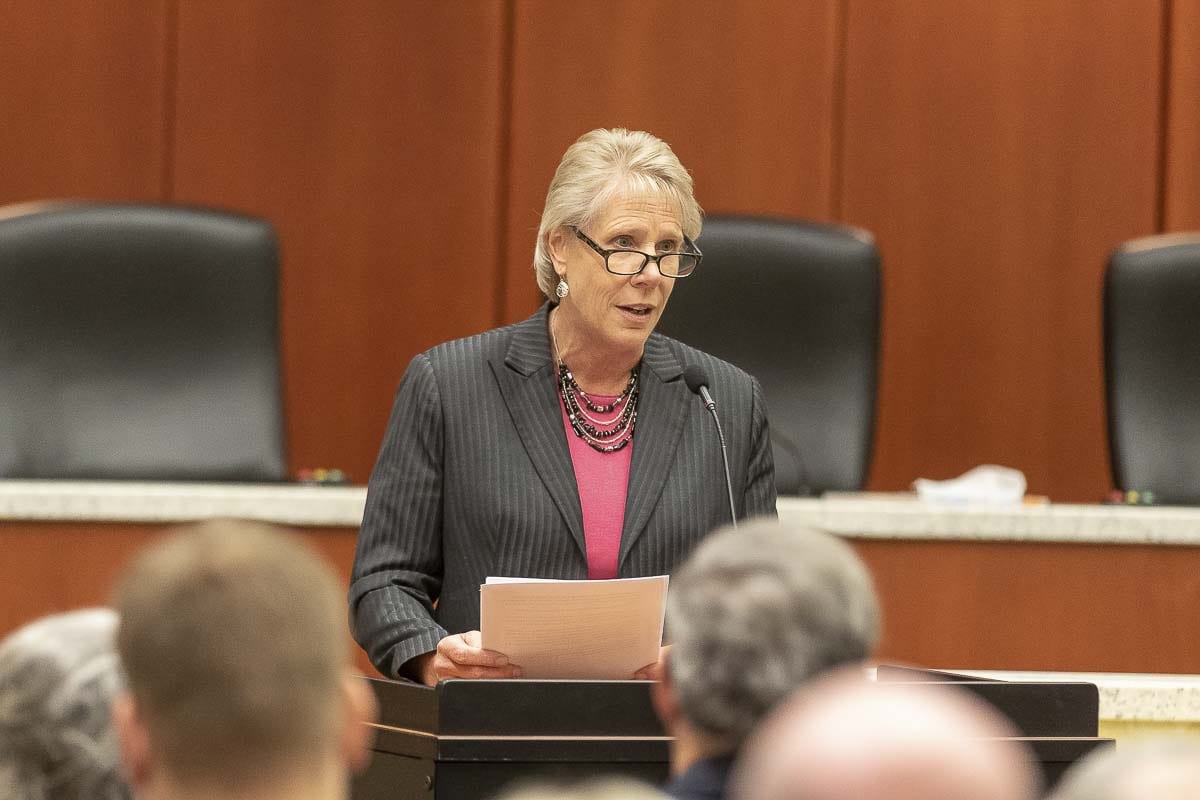
In his comments Henessee said they’re expecting a final recommendation from a volunteer committee on the county jail sometime in June or July. The jail is over-crowded and outdated.
“We don’t even prepare the food at our jails anymore,” noted Henessee. “We had to use that space for other purposes. We actually prepare our food elsewhere and then ship it in.”
Despite the obvious need, Henessee says they’ll have to weigh the project costs carefully. Final costs are projected to be as high as $300 million for the preferred alternative.
“Not only do we have to look at the jail, but we have to look at the impact county-wide,” said Henessee, noting that construction costs are only the first part of the equation. “It’s the personnel costs that are truly terrifying to me at times, because those costs only continue to increase.”
What to do with the budget
In fact, personnel costs are the major contributing factor to the county’s existing budget crisis. While actual county employment has fallen in the past decade, costs have increased nearly 25 percent due to healthcare and pension costs, in addition to negotiated salary increases.
In her comments, Olson noted that 71 percent of the county’s general fund goes to cover salary and benefits, “and Clark County spends less per capita on general fund services than any other county our size.”
Olson also related a story from her recent re-election campaign, when someone said they believed the county could cut 25 percent from the general fund budget just through wasted spending.
“That’s just simply not a reality,” noting that 38 percent of the county’s budget comes from property taxes, with 28.4 percent coming from sales taxes. The rest come from fees, fines, and a variety of other sources.
“Those other revenues have declined by an average of 1.8 percent per year, and in 2018 they declined by 6.7 percent,” said Olson, adding that county revenue is up 1.8 percent in recent years, while expenses have gone up 2.3 percent.
“I want you to know the attention that we pay, and that our staff pays, every single year that we go through this process,” said Olson. “We make sure that we’re spending your tax dollars wisely and respectfully, and we make sure that every single year we look for ways to reduce and to be more efficient with your tax dollars.”
In his remarks, Henessee noted that the county is now on an annual budget, meaning the process is already underway for next year. After submitting his suggested budget last year, which was approved by the council in December, Henessee says he’s doing what he calls a “deep dive” into the budgets of each department.
“I think some county employees who have to go through this process may have other names for them,” quipped Henessee. “It’s not always the most enjoyable process, but it’s a critical thing because I need to look, as we prepare this budget, at not just the general fund but all the funds, to make sure that we are wisely using the taxpayer monies.”
Development opportunities
Those budgetary issues may partially explain a renewed sense of urgency on the part of the council to explore opportunities for growth. Chief among those for this year seems to be the area near the Fairgrounds along 179th and I-5.
The area represents a potential 4,000 acres of developable land, 2,000 of which is currently vacant. But the county needs to show and necessary infrastructure improvements to address the increased traffic development would bring to the area have been reasonably funded. That is being accomplished through traffic impact fees and private investment in traffic improvements.
There’s also the matter of the long-awaited update to the archaic freeway interchange at 179th and I-5. The legislature has approved funding for the project, but it won’t be accessible for several more years.
“We are working with the transportation committees in both chambers, to request some of these dollars be released earlier,” said District 3 Councilor John Blom, “so we can move forward with planning and design work.”
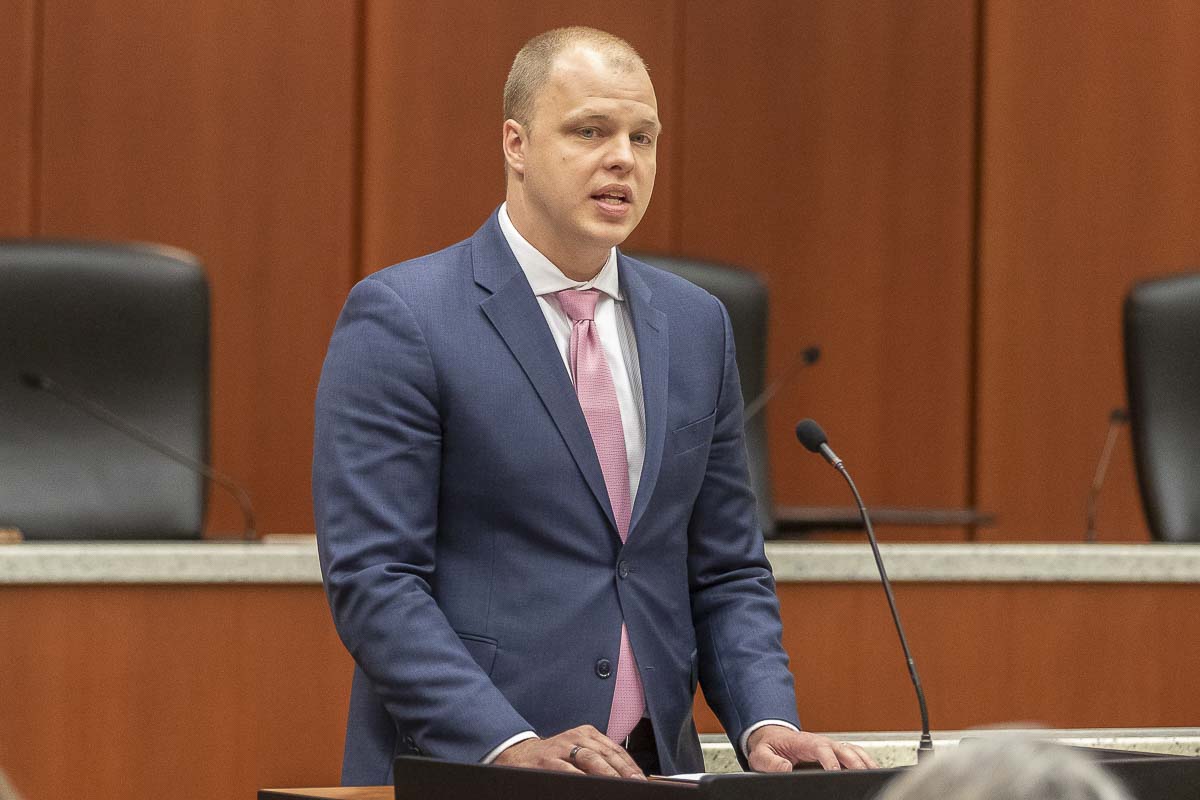
The council has already moved to lift urban holding on one piece of property, and the planning commission has recommended further moves to open up land for development there.
“this is a significant opportunity to provide jobs, housing, and infrastructure development in Clark County,” said Olsen, noting that a full build-out of the 179th Street area is estimated to generate up to $239 million dollars in revenue for the county during construction, and an additional $23-34 million in annual revenue from property and sales tax. “It’s time that we get moving on this, take the shackles off of this project, and we get moving.”
Medvigy noted the patience of developers who have long waited to start development in the south end of the Discovery Corridor along I-5.
“Some of them have been in this for like ten years trying to get this done,” said Medvigy. “It will benefit the county at large, increasing the tax base, increasing housing. It’ll be a boon to our county as a whole.”
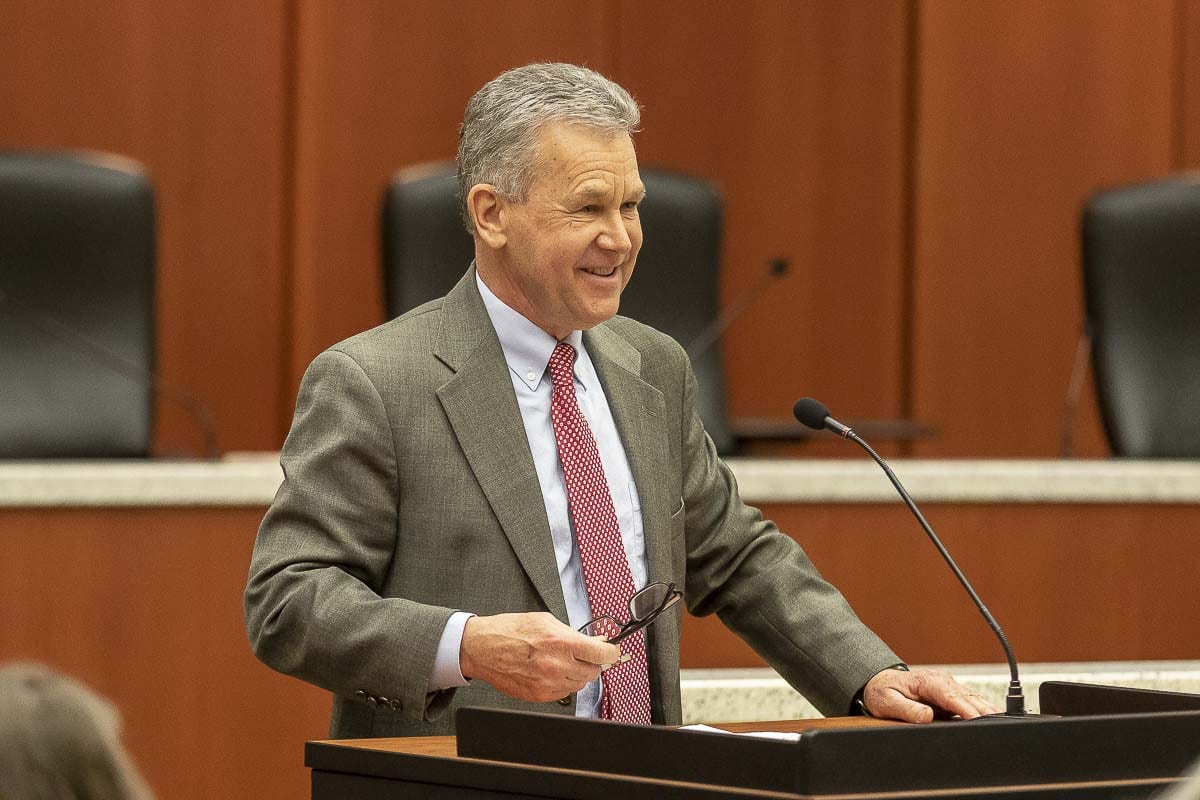
Medvigy was also the only council member to mention the controversial move to allow industrial development along a section of the Chelatchie Prairie rail line near Brush Prairie.
“I love the railroad. Our country was built on the railroad,” Medvigy said, while acknowledging the plan faces some stiff opposition from neighbors and some environmental groups. “I know there’s a lot of contentious issues out there because of the parks and the rural nature. But there’s a lot of work that’s been done, and the county councilors will, in the future, give that great attention to have the best uses there.”
Housing issues
The move to open land for new development highlights the continuing housing crunch happening in the county, where rental prices continue to outpace much of the rest of the country. According to Lentz, rental prices statewide have increased 18 percent between 2006 and 2015.
“We have a statewide shortfall of about 340,000 of these units of affordable housing,” said Lentz, adding that the county is working with the city of Vancouver on a new affordable housing project, and addressing some of the issues through land use policies that opened more opportunities for cottage housing, Accessory Dwelling Units, and manufactured homes.
“We have a great and important opportunity here to work with other jurisdictions and with private sector partners to address the growing need in our community,” added Lentz.
But addressing the problem is being made more difficult, said Henessee, by an ongoing legal battle with Clark County over the state’s Growth Management Act (GMA). Currently the state’s growth management board has ruled that the county is out of compliance with the GMA. Henessee said that means higher costs for county projects since they can’t qualify for lower interest bonds, or get access to a number of state grants.
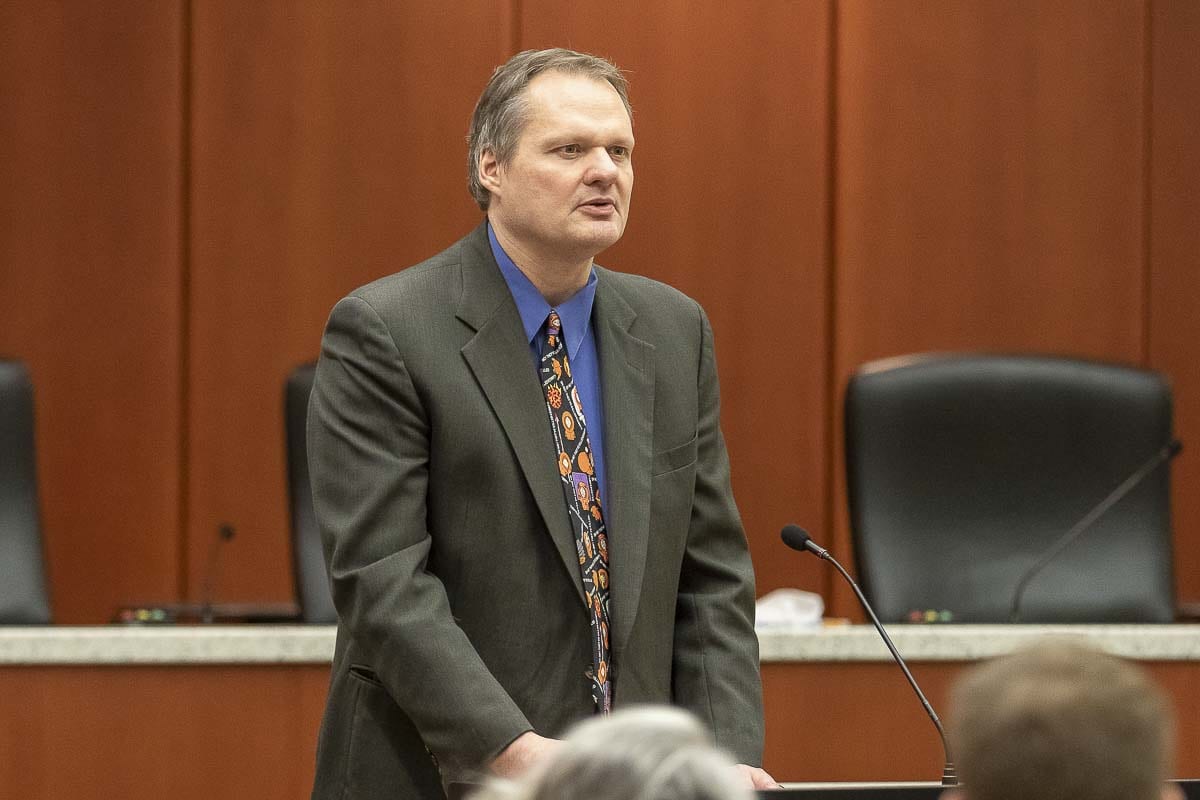
“It is very difficult when, from my perspective, the GMA treats Clark County the same as a very large rural county,” said Henessee. “It makes it very difficult as far as following all the mandates of the GMA.”
The county has appealed the decision by the board, and Henessee says they will consider a potential settlement before then.
“There is a difference of interpretation that Clark County and the Growth Management Board has,” Henessee added. “And that’s about the most diplomatic way I can put it.”
Cautious optimism
Despite the challenges ahead, the comments of the five council members and the county manager were tinged with optimism.
“There are 3,069 county governments chartered under state constitutions or laws, and none of us are the same nationally,” noted Olsen, “but we are all on the frontlines of delivering vital services to our residents.”
But there appeared to be hope that some continuity in leadership, a move to an annual budget, and a different perspective could lead to some positive momentum in the council. Medvigy, for one, said he had a completely different idea of how the county government worked from reading the paper than he does now as someone attending the many council meetings, workshops, and community events.
“This council is hitting on all cylinders,” said the former judge. “The people that are here are working together, working the details as you’ve heard, bringing their diverse backgrounds and experiences. We are getting work done, and I’m very proud to be working with this team.”
Olsen, who is now the longest-tenured council member agreed, saying she feels a greater sense of teamwork and focus happening now at 1300 Franklin Street. She, and several other councilors, also said they continue to be encouraged by the level of public involvement in county government shown over the last year.
“And I know I won’t forget the lengthy, robust, and spirited discussions we had about the use and sale of fireworks in Clark County, and our moratorium on cannabis,” Olsen said, drawing a chuckle from the crowd.




